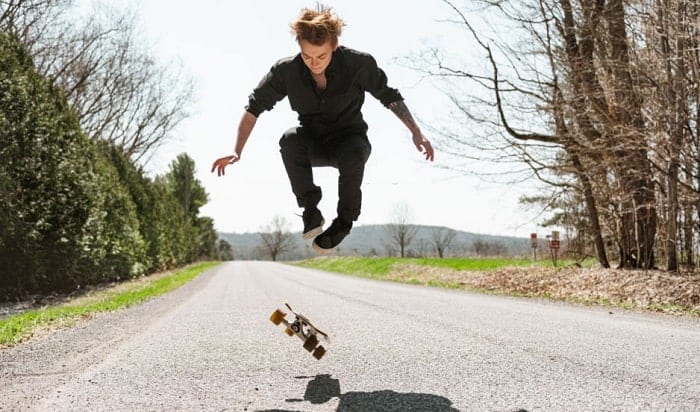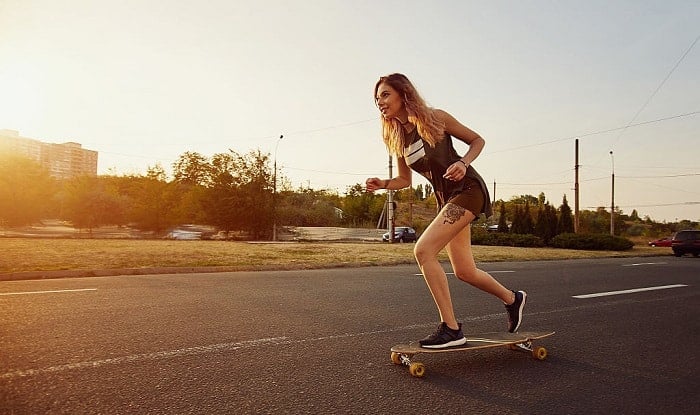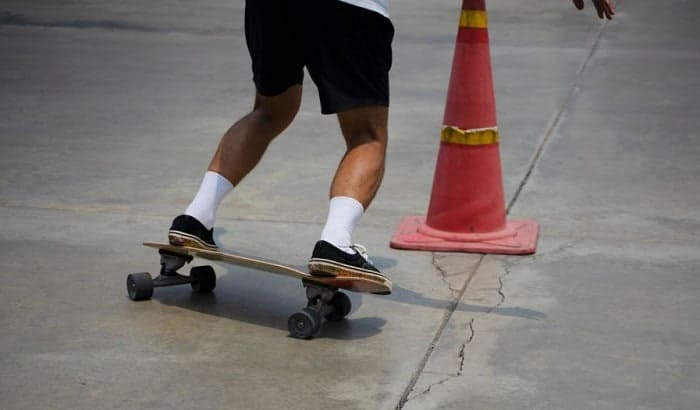In simple terms, longboarding dancing is just utilizing your board and doing some fancy tricks in a flowing motion. You might be wondering how to longboard dance? For total beginners, all you need is a suitable board, an eagerness to learn, a few tutorials, and you’ll be good to go. The board itself is of critical importance; not just any will do.
In this article, I will be running through critical tips to consider when purchasing the hardware to skate on. From choosing the right size for your body weight to the construction of the board itself, the right longboard will let you dance better.
I’ll also add on some fundamental dances you can learn, so keep on reading before you get yourself out on the road.
Table of Contents
Picking the Right Dancing Board
Deck Length
When it comes to a longboard dancing setup, there are various kinds and they are best suited for distinct activities.
Longboards designed for dancing generally have a deck length between 39 and 48 inches. Additionally, this length enables doing crosses and other techniques on the deck. This contributes to a fluid movement. Longboards of this size are slow and soft-moving, and their smooth turn helps them to stay balanced when they’re ridden.
A length around 40 inches enables the boards to be flipped more easily, but more crucially, it offers you enough surface area to dance on.
Deck Flex
When you put weight on a board, it bends and flexes. Dance longboards are almost always bound with a little of it. Dancers generally choose flexible boards. This is a good place to start for someone who is a novice.
Flex gives you the freedom to perform a tremendous amount of footwork. When you need to move quickly across the board, it’s easier to have a solid board feel rather than one that is twitchy, and a flexible deck makes this possible.
You should also consider your weight when making this decision. In order to reduce the possibility of breakage, the heavier you are, the stiffer the board you should pick.
Wheels & Trucks
For dancing, you’ll need a wheel that rotates fast and one that stays in motion indefinitely. The two major qualities of wheels that can achieve this are a big diameter and excellent urethane, which is the rubber-like substance that many wheels are manufactured from.
The larger the diameter, the faster the wheel will keep moving. Even if you give it a gentle push, it will continue to roll. This allows you to perform a large number of different movements and keep your board speed constant. A wheel with a height between 65 to 70 millimeters is what you need.
A high-quality urethane completes the mix and lets the wheels roll easily and keep their pace. If wheels are of low quality, they perform similarly to flat tires, and this causes the wheels to stop gaining speed and travel at a slower pace.
You should look for trucks that are around 180-millimeter wide and have a 50-degree angled baseplate. These two features will make the longboard feel alive. It’ll have a really smooth and steady movement. The trucks won’t jitter unexpectedly when you move quickly.
Kick Tails
In order to do longboarding tricks and stunts like the Ollie, you will need a good pair of kicktails. Longboards ought to have a cambered concave, since that allows you more room for your feet, so that you may move around freely on the board.
3 Simple Dancing Tricks to Try
180 Step
I strongly encourage new longboard dancers to master this move since it leads to numerous other movements and combinations. The ideal 180 Step Longboard features are those listed above.
To do a 180 step, keep your front foot on the toe side of your deck’s edge and move in the direction you want to go.
Instead of maintaining your current stance, move your back foot into the position of a switch stance. Turn your foot in the center of the board to the opposite side, then carve. Keep going until you lose your balance and have to stop.
Remember that the key to executing this dance move is to keep everything flowing. Assess your physical capacity to maintain footwork, and adapt accordingly. Starting off on an upside-down board helps to familiarize you with the movement before trying it on wider trucks.
Peter Pan
It is a fantastic and magical way for new longboard dancers to start.
To start, place your front foot on the center of the board. Traverse the entire deck with your feet positioned parallel to the surface.
Always remember to place your toes on the board before bringing your heels down. This provides you with the ability to release the foot that was in contact with the board with minimal resistance.
Employ the carve to your favor to maintain your balance. Many people experience this: They are afraid to take that step, and as a result, they find themselves stuck in the middle with their feet bound.
Cross Step Over
Your front foot should come near the tail of the skateboard deck. On the heel side edge, step your rear foot over your front foot. Adopt the Peter Pan steps, then jump back to a regular riding posture.
It is important that you avoid balancing the amount of your turns. Instead, for every step, place your foot entirely on edge and keep your body positioned in the middle. Reduce your turning by tightening your trucks in the beginning. However, with time, keep loosening your trucks.
Conclusion
Learning how to longboard dance quickly and hurriedly puts you at risk of falling. To keep your eyes focused straight ahead, consider practicing not glancing down when you’re skating.
When you stare at your feet, you lose your stance, increase your chances of skating into obstacles, and it can be embarrassing at times. Of course, you don’t want to walk off your board’s nose. The longer you practice, the sooner you’ll begin to feel the longboard as an extension of your feet.

I am Michael, and I have been enjoying this fun sport for seven years. And nothing is better than having a community to share our passion for those thrilling tricks. I am ready to tell you all I know about skateboarding, showing you how to choose a good board and trick to start and how the practice goes. Stay tuned!




